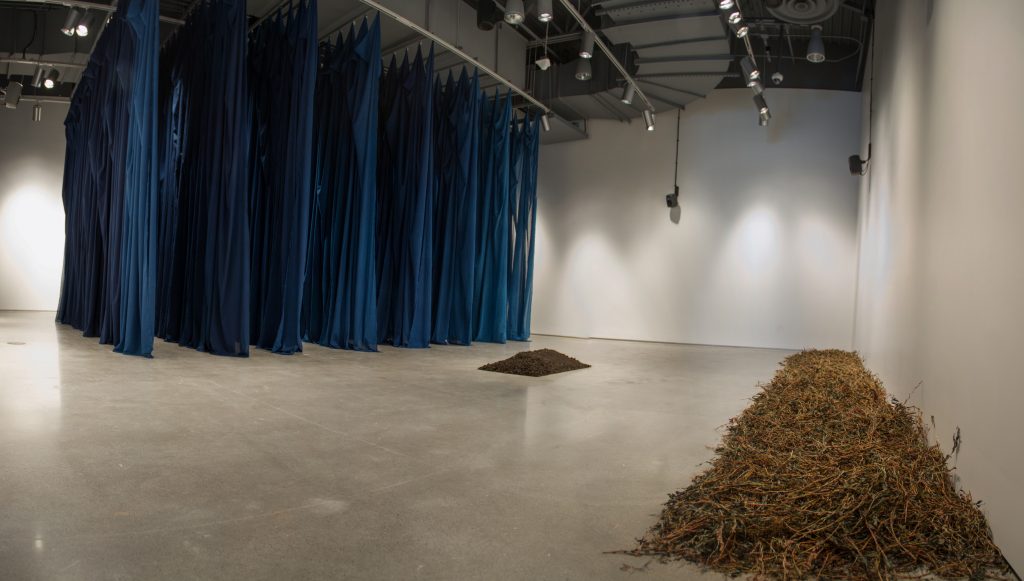Some of its Parts
July 26 – October 25, 2014
Zuckerman Museum of Art Kennesaw State University

Using cultivated indigo plants as dyes, Rowland Ricketts transfers their color to cloth with traditional dyeing techniques honed over many centuries. The colors obtained are enriched by each plant’s historical, cultural, and physical substance as well as by the connection across time to all who worked within these traditions. This new installation features sound artist Norbert Herber and includes educational programming on the indigo dyeing process.
This installation began as an inquiry into the concept of amount. We questioned whether a certain quantity of material and characteristics of a process would lead to a result or outcome that could be similarly quantified: How many indigo plants produce how much dyestuff that in turn produces how much color on cloth? As artists we have always relied on direct experience to provide evidence of what something is. Quantitative evaluations rarely entered into our respective processes. As a result, this work was initiated with a focus on data: hard numbers, a methodical approach, and a willingness to accept the results of a process and work with these irrespective of personal preference or taste.
We believed that measurements made at nearly every step of the process would tell us, ‘this is what you have.’ But as we paused to measure and observe we were struck by the idea that the picture is incomplete. For example, indigo is not soluble in water and therefore requires an alkali—in this case wood-ash lye. When measuring the pH of successive batches of that lye with litmus paper our results all looked the same, which would lead us to conclude that the alkalinity was equal across the batches. Touching and tasting the batches of lye, however, showed dramatic differences of alkalinity. Similarly, the blue of a finished textile can be scanned and mechanically broken into numbers in the red, green, blue (RGB) color spectrum. This allows us to analyze what the dye has produced, but we can only understand these numbers through our physical experience of the blue whole.
This installation is the result of these and other quantitative processes that measure the constituent elements of our materials and use this data as a means of shaping what you see and hear in the gallery. The materials and process are physically present in accurate amounts, answering our initial questions of how many plants, how much dyestuff, and how much color in cloth. The sound is translated from temperature and color data sets. The temperature of the composting indigo leaves was logged in 15-minute intervals over the 100-day period of processing, yielding over 10,500 measurements ranging from 42-157°F. The finished textiles were digitally scanned, analyzed, and separated into RGB color values. The temperature and color numbers are read by software in real time and become sound through various methods of synthesis, filtering, and digital signal processing.
In some ways, these visuals and sonified data encompass and embody everything about the indigo process, but in other ways they’re incomplete. As aggregates of a greater whole they are merely ‘some of its parts.’ But when experienced together we sense something much greater and much less quantifiable than just the color blue or audible changes of frequency over time.
